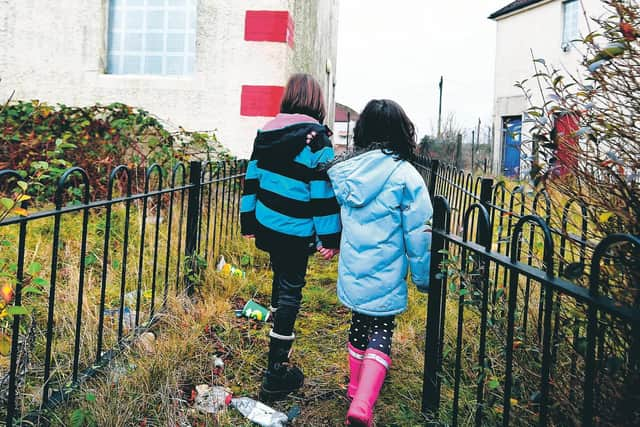‘No room for complacency’ as thousands of Aberdeenshire children live in poverty
The research, covering the period to 2020/21, provides the best available estimates of child poverty at local authority level, after housing costs have been taken into account.
It shows that 6749 children are living in poverty in Aberdeenshire.
Advertisement
Hide AdAdvertisement
Hide AdCampaigners say the new data shows just how important additional investment in the new Scottish child payment will be to supporting families through the cost of living crisis and to drive forward efforts to meet Scotland’s child poverty targets.


The payment was introduced from February 2021 for children under six where families are in receipt of universal credit.
Its value was doubled from £10 to £20 per week in April 2022 and it will increase to £25 per week when rolled out to all eligible under 16s by the end of the year.
Bridging payments for school aged children were not doubled and the coalition is urging Scottish Ministers to ‘act now to double the bridging payments in advance of the full roll out of the Scottish child payment’.
However members of the End Child Poverty coalition in Scotland - including Child Poverty Action Group in Scotland, Save the Children, Trussell Trust, Poverty Alliance, Oxfam Scotland, Close the Gap, Aberlour, Children 1st , Home-Start Scotland, Children in Scotland, Parenting across Scotland and One Parent Families Scotland - are also calling on the UK Government to ensure UK benefits keep pace with inflation permanently not just through one-off measures announced by the Chancellor in May.
The new research by Loughborough University, on behalf of the End Child Poverty coalition, shows that the headline rate of child poverty across the UK fell during 2020/21, primarily as a result of the temporary £20 a week uplift to universal credit brought in during the pandemic.
Scotland has lower levels of child poverty than England or Wales.
However, campaigners in Scotland say that whilst progress is being made there can be no room for complacency if Scotland’s statutory child poverty targets, which were agreed by all the Holyrood parties, are to be met.
Advertisement
Hide AdAdvertisement
Hide AdThe Child Poverty (Scotland) Act requires the Scottish Government to ensure fewer than 18% of children are living in poverty by 2023/24, on course to achieving less than 10% by 2030.
Scotland’s Poverty and Inequality Commission recently warned that meeting the 2030 target will require “more transformational change” to address the drivers of poverty – including action to reshape the economy.
The campaigners also highlight that Scotland’s independent care review, The Promise, was clear that “there must be significant, ongoing and persistent commitment to ending poverty and mitigating its impacts for Scotland’s children, families and communities.”
Councils and local health boards are also required to publish annual Local Child Poverty Action Reports setting out action being taken at local level to tackle child poverty.
The End Child Poverty campaigners are urging newly elected councillors across Scotland to use local powers, including over economic development, housing and financial support, to maximise family incomes and reduce the costs parents face.
They say the Scottish government should also ensure that local authorities have the resources needed to effectively deliver local services that tackle child poverty.
They are also urging the Scottish government to double the value of bridging payments being made in October and December to families with school aged children on the lowest incomes.
Bridging payments were introduced as providing “cash equivalent to the Scottish child payment” for eligible school aged children until full roll out of the Scottish child payment itself.
Advertisement
Hide AdAdvertisement
Hide AdHowever, they haven’t been doubled as the payment has, despite the growing pressure the cost of living crisis is placing on family finances.
Speaking on behalf of members of End Child Poverty Ed Pybus, of the Child Poverty Action Group in Scotland, responded to the new figures.
He said: “The figures show just how big a difference investment in social security can make, and how important the Scottish government’s new Scottish child payment is and will continue to be if Scotland is to end the scandal of children living in poverty.
"Progress is being made but, as low-income families struggling to cope with spiralling prices know all too well, there is no room for complacency, and we need every level of government to do its bit if we are to meet Scotland’s child poverty targets.
The UK government must now commit to ongoing increases in UK family benefits.”
Mr Pybus continued: “Here in Scotland we urge newly elected councillors to use every tool at their disposal to boost family incomes and reduce the costs families face.
“That means using local powers to deliver more cash support to families, support decent jobs - especially for women and those affected by disability, and improve access to high quality, free and accessible childcare.
"Finally, the Scottish government should act now to double bridging payments in advance of the full roll out of the Scottish child payment to ensure school aged children get the same support as the under sixes who are already benefitting from the payment.”